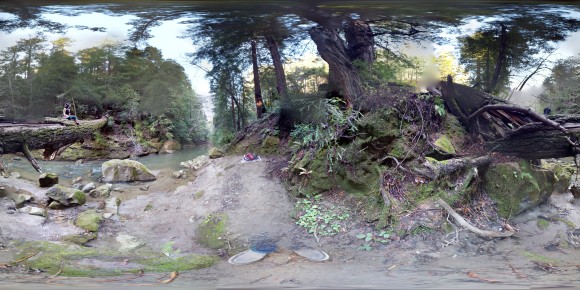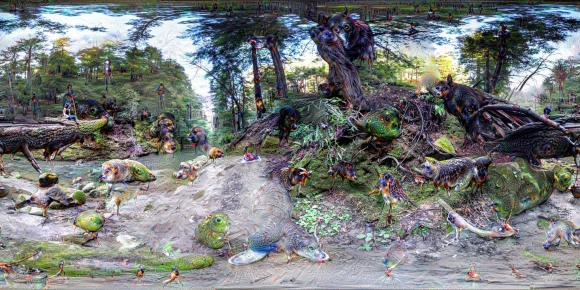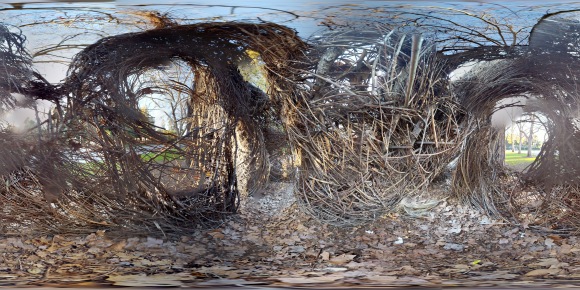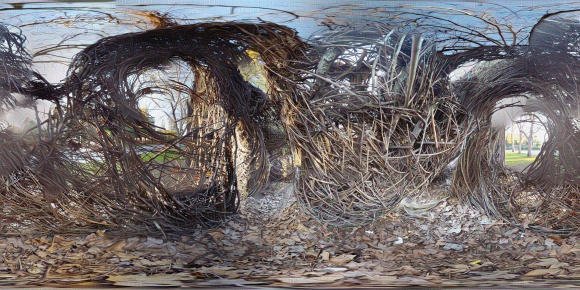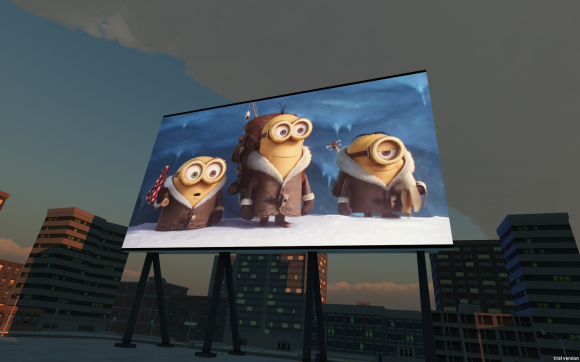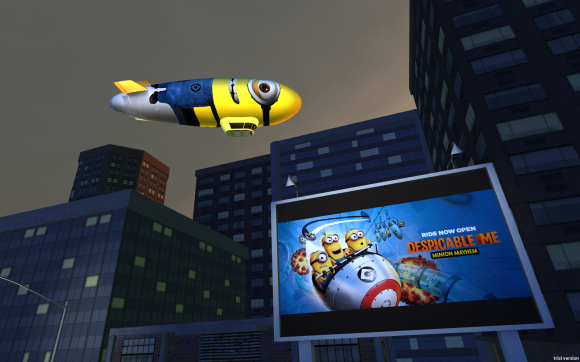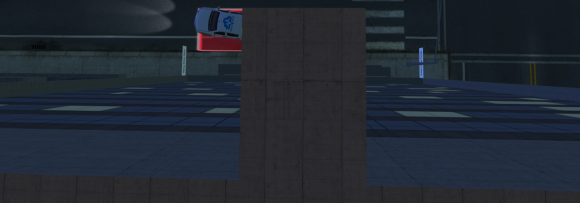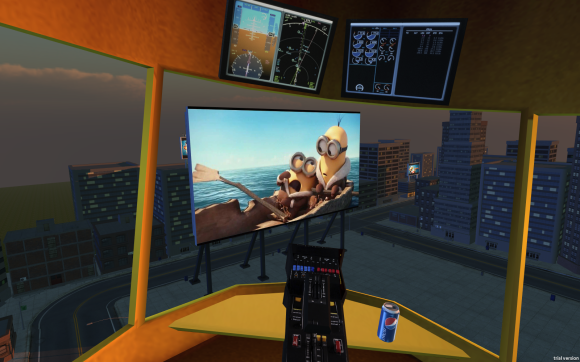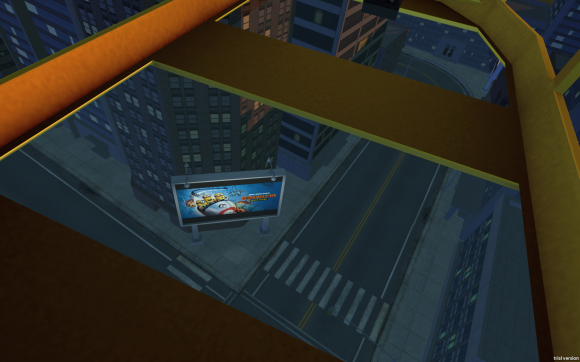The hype around virtual reality is now at an all-time peak, and with good reason. Thanks to Moore’s Law and the passage of a few decades, virtual reality is finally here (or just months away, depending upon where you draw the line on what is or is not truly virtual reality). But this is hardly the first time that virtual reality has been the super-hot Next Big Thing…
In fact, exactly 26 years ago this week VR got its first mainstream “hype moment” via a front page article in the January 23, 1990 edition of the Wall Street Journal. In a lengthy, well-researched, and well-written piece, legendary WSJ staff reporter G. Pascal Zachary described the promising technology as nothing less than “electronic LSD”. As I wrote about in Virtual Reality Then and Now, that piece inspired me to seek out a demo of the tech upon my arrival to Silicon Valley in the fall of 1991, and helped set me on the path to becoming a virtual reality entrepreneur (now two times over). With the anniversary of its publication just days away, I recently decided to dig up that historic article and re-share it with the world.
Alas, the online archive for the Wall Street Journal doesn’t go back that far, so I had to find another way. An online chat with a librarian at Stanford confirmed that they had a copy of the issue, so on a recent morning I headed over to campus and used my alumni status to gain entry to the Green Library.
Once inside, I asked where I could find the old newspaper collection. The nice folks behind the counter let me know that I was mistaken in my quest for hard copy. That morning I would not be flipping through yellowing pages of newsprint; the publication I sought was only available in the form of “microfilm” in the Media and Microtext Center, down in the basement.
Downstairs I was greeted by two friendly staffers who confirmed I was the guy they just were discussing on the phone, and that I was indeed seeking the WSJ microfilm from January 1990. A few minutes later, one of them emerged from the deep recesses of storage, carrying a single spool of film about three inches in diameter. He sat me down at one of many unoccupied microfilm viewing stations and started to give me a tutorial on how to use the equipment:
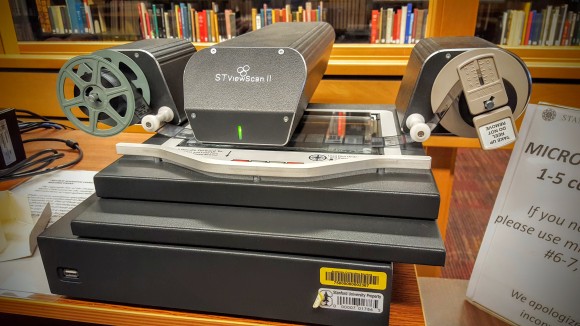
One of the many microfilm scanning stations in the basement of Stanford’s Green Library
After a minute or so of painfully arcane instruction, my aide stopped himself. “Actually,” he said, “how much of this are you planning to do?”
“Honestly,” I said, “I haven’t used microfilm in decades, and I don’t really anticipate doing it again any time soon. Maybe ever.”
And so he stopped his tutorial and kindly went about the cumbersome process of spooling the film back and forth to zero in on the edition in question. Fortunately, this “modern” microfilm machine was connected to a PC and had digital scanning capability. After a few minutes, we were able to resurface and digitally scan the front page, complete with the legendary “dot drawing” of the dreadlocked Jaron Lanier, founder/CEO of pioneering virtual reality startup, VPL:

Of course, just having a digital scan of the print edition doesn’t quite satisfy your, my, or anyone’s thirst for full-on digital access to the text, so over recent evenings I took on the painful task of “manual OCR”. [Hopefully, my friends at the Wall Street Journal will see this as “fair use” for posterity and not an infringement on their copyright.]
There’s so much I could say about this piece, starting with my surprise that it uses the term “artificial reality” throughout, despite VPL being widely credited with coining the term “virtual reality”. Also, note how much of modern Silicon Valley startup mythology is present: unconventional, visionary, “dropout computer whiz” founder/CEO with a disruptive technology that could impact many industries: “entertainment, education, engineering, medicine and many other fields of endeavor — pornography among them” — along with some rather prescient market timing doubts by a highly credible naysayer, no less than Jim Clark of Silicon Graphics (and later) Netscape fame.
So much more I could say, but here, without any more of my commentary, is the full text of this truly amazing intro of virtual reality to a mainstream audience:
Artificial Reality
Computer Simulations May One Day Provide Surreal Experiences
Jaron Lanier Develops Way For the User to Control and “Feel” Video Action
A Kind of Electronic LSD?
By G. Pascal Zachary, Staff Reporter of THE WALL STREET JOURNAL
REDWOOD CITY, Calif. — Jaron Lanier, his blond dreadlocks swaying, fiddles with the goggles on a young man’s head, then slips a black Lycra glove onto the subject’s right hand. The crowd that looks on is awaiting a glimpse of the future — the world of “artificial reality”.
“Just wave to get started,” instructs Mr. Lanier, a stocky six-footer who looks like a white rap-musician.
The crowd hears a sudden eruption of music and, on a video monitor, sees a bird flying high over a calm blue bay divided by a red bridge. The same vision to the man in the goggles seems eerily surreal. He is watching the bird through two screens mounted in the goggles. He feels as if he is part of the scene, which changes with a movement of his gloved hand: The bird soars then swoops down toward the water.
The crowd oohs and the young man giggles. Moments later, Mr. Lanier taps the subject’s shoulder. “Are you ready to enter the physical world” he asks. “Are you sure you’ll like it?”
To hear Mr. Lanier tell it, he himself wonders if artificial reality might be too appealing. He thinks of it as electronic LSD, with the power to blur a participant’s ability to distinguish between reality and fantasy. Advocates of the “Just Say No” persuasion, he says, may someday feel obliged to seek a ban on it. Timothy Leary, the former Harvard researcher who popularized LSD in the 1960s , says of artificial reality: “It’s getting closer and closer to the psychedelic experience.”
Mr. Lanier, a 29-year-old high-school dropout and computer whiz, is the most articulate and attention-grabbing member of a loose network of artificial-reality researchers and inventors. They have a vision of Americans working and playing in electronic fantasy world that, they say, will transform entertainment, education, engineering, medicine and many other fields of endeavor — pornography among them.
“This is far more important that the development of the personal computer,” contends Michael McGreevy, who oversees the National Aeronautics and Space Administration’s work in artificial reality. “You’re not constrained by keyboards, ‘mice’ and monitors,” he says. “You can explore living environments.”
Wrung-Out Pilots
The crude artificial-reality machines that already exist are the product of years of research by the Air Force, NASA, and several universities and individuals such as Mr. Lanier, who is something of a maverick in the field. He is founder and chief executive officer of VPL Research Inc., a 16-person artificial reality firm here in Redwood City.
Even now, artificial worlds are in use. At Wright-Patterson Air Force Base in Dayton, Ohio, fighter pilots train in artificial cockpits. Outfitted with special goggles and headphones, they both see and hear the battle. “This really gets their juices flowing,” says Thomas Furness, until recently head of Wright-Patterson’s artificial reality project. “They come out of the cockpit sweating, wrung out.”
Architects and designers are on the verge of exploiting artificial reality. A University of North Carolina computer scientist has designed a program that allows architects to design a building and, after putting on the appropriate devices, lead a client on a tour of it. If the client wants larger windows in his office, the architect simply grabs the window with his electronically gloved hand and enlarges it. Many other projects are in the works.
First, Toys
In a modest way, Mattel Inc., the toy maker, brought artificial reality to the consumer market last fall. Mattel introduced a $90 computer glove, partly based on VPL’s design, that enables users to control some Nintendo games with hand gestures.
Dozens of companies in the U.S., Japan and Europe have purchased devices from Mr. Lanier’s firm, VPL Research Inc., to study ways to exploit the technology of artificial reality. Its unlimited potential for creating environments that a properly wired subject can see, feel and control explains all the interest. “This is probably the most powerful stimulant to the imagination ever,” says Brenda Laurel, a Los Gatos, Calif., computer consultant who has followed developments in artificial reality for a decade.
How does it work? Besides supplying computer-generated images, VPL’s goggls contain a magnetic tracking mechanism that responds to movements of a person’s head, causing the field of vision to shift as it might in the real world. Moving the glove signals the computer to move objects in the artificial environment.
Sensors stitched in the “data suit” can signal body movements by the wearer and change the visual perspective as if the wearer were moving through the scene. The sensing devices are connected by fiber-optic cables to computers that update the visuals 15 to 30 times a second. What the viewer sees is close to some sort of reality.
Still, today’s systems fall short of that. “I felt as if I were in a theater and could still see what’s going on backstage,” says Eric Hulteen, an engineer at Apple Computer, Inc. who has tried an artificial reality system developed by NASA. “The movement was slow, the images cartoonlike, and it was hard to grab anything. But I enjoyed it.”
Costly Trip
The hardware is expensive: $88,800 for a glove, $9,400 for goggles, up to $500,000 for a complete system — “a lot of money for a hit of acid,” quips Eric Lyons, director of technology for Autodesk, Inc., a Sausalio, Calif., concern developing artificial-reality software.
Mr. Lanier, artificial reality’s most extravagant promoter, was born in New York City and grew up in El Paso, Texas and Las Cruces, N.M. “Jaron was the noisiest infant in the nursery,” says his father, Ellery. “You could hear him through the glass windows.” In grade school he dressed so strangely — often wearing his shirts sideways, for example — that classmates once refused to allow him in a school photograph. As a teen-ager in New Mexico he lived with his widower father in a lean-to and, later, a geodesic dome. He kept a a herd of goats and milked them in the kitchen.
After dropping out of high school, Mr. Lanier faked his way into New Mexico State University. “He was a giant mind, one of the most brilliant students I’ve ever had,” recalls Warner Hutcherson, a professor of electronic music at the school. Yet he failed to get a degree. He also lacked social graces. “He smelled bad,” says Mr. Hutcherson. “But Jaron had other things to worry about than take a bath.”
As a corporate executive, Mr. Lanier has lost little of his eccentricity. Though neither a black nor a Rastfarian, he keeps his hair in dreadlocks that distinguish the Jamaican sect. He is apt to wear the same clothing for days. He drives a 1986 Citroen and lives in a rented four-room cottage at the end of an unpaved street in nearby Palo Alto.
World Without Limits
He is an accomplished musician and born performer. His place is cluttered with instruments. Many, like his Chinese harp and his Thai pipe organ, are exotic. Eleven wood flutes hang on one wall alone.
His obsession with artificial reality seems to reflect his dissatisfaction with conventional reality. “There’s this problem that you have to cope with [in] the real world,” he says. “You have to give up the infinity of your imagination to reach other people. Because we meet in this physical world, we have to make compromises, we have limited power. In [artificial worlds] there’s this incredible sense of release. All of a sudden you are infinite in this world.”
Mr. Lanier seized on artificial reality in 1983, after winning some notice as the creator of video games that blended sounds and scores into computer programs. On a visit to Atari, a video-game maker that was exploring new approaches in computer entertainment, he met Tom Zimmerman, a Massachusetts Institure of Technology graduate and also a musician, who had designed a computer glove in his spare time. They hit it off, and founded VPL in 1985.
One of the first things Mr. Lanier did with Mr. Zimmerman’s glove was to create a software program that enabled him to perform the music of the late guitarist Jimi Hendrix and another in which he conducted an orchestra. “Jaron’s dream is to make the experience of using a computer like playing music,” says Scott Kim, a software developer.
Manufacturing Chaos
Several VPL employees are enterprising artists with a knack for electronics. Ann Lasko chief designer of data suits, spends most of her free time doodling away at an artificial world in which she is a lobster (one of her biggest problems is to figure out the best way to move her antennae). Her husband, Young Harvil, who designed the firm’s three-dimensional program, has a master’s degree in fine arta and no formal training in computers. Before joining VPL, he was curator of a coprorate art collection.
As a workplace, VPL leans toward the chaotic. Mr. Lanier is no Henry Ford. The firm’s complex, custom-made products often aren’t finished until hours before shipment deadlines. The data suit in particular defies mass production. Unless it is fitted to its user with extreme care, its sensors fail to register properly. Some customers send wearers to VPL’s office so the suits can be tailored on them.
Yet customers as diverse as computer and amusement park developers are so excited about the prospect for artificial reality that they’re willing to endure Mr. Lanier’s dicey production schedules. “There’s something fundamentally right and interesting about what Lanier is doing,” says Jean-Louis Gassee, head of new products at Apple Computer, which has purchased several of VPL’s gloves.
Some customers, however, have soured on Mr. Lanier. ShareData Inc., a Chandler Ariz., software firm that financed VPL’s glove research in the mid-1980s, eventually became frustrated at Mr. Lanier’s inability to finish the job. Later it ran into unrelated financial problems that caused it to cancel the project.
Abrams/Gentile Entertainment, a New York toy design company, says it faced similar frustration after licensing VPL’s glove design. It then agreed to supply Mattel with a toy glove based on VPL’s technology. Abrams/Gentile says it spent $1.5 million developing VPL’s glove technology, but found “it wasn’t living up to its billing,” said Christopher Gentile, a principal in the firm. The company paid another design team to finish the glove, and is now seeking to deny VPL royalties on Mattel’s sales. VPL is fighting Abrams/Gentile’s move in court.
Playing With Toys?
Some have accused Mr. Lanier of taking credit for inventions made by others in an attempt to monopolize the essential technology of artificial reality.
VPL recently settled a lawsuit against Stanford University that, among other things, involved a dispute over the ownership of ideas. Howard Perlmutter, a Santa Cruz, Calif., inventor accuses Mr. Lanier of stealing his ideas about computer clothing. Mr. Lanier denies it. “People look at Jaron and think they can take advantage of himm” asserts Jack Russo, a specialist in intellectual property law whose clients include Mr. Lanier and Apple Comuter.
Others fault Mr. Lanier’s showmanship and says he is overselling artificial reality. “He’s bumbling around with toys,” says James Clark, chairman of Silicon Graphics Inc., maker of the high-speed graphics computers central to Mr. Lanier’s system. Mr. Clark thinks that computer goggles and clothing are too constraining, and won’t enter wide use.
Mr. Lanier disagrees, insisting he’s chosen the richest technical path toward artificial reality. “We’re certainly the pioneers of this field,” he asserts. In any case, he says, technical considerations are in a sense trivial when compared with the dream-fulfilling promise of artificial reality. He is eager to pursue it; asked how he plans to spend a weekend, he answers: “I’ll be busy. I’ve got some worlds to create.”
